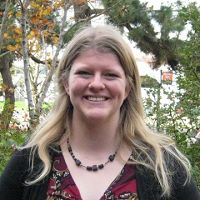Lybrand et al., 2017
Soil organic carbon partitioning and Δ14C variation in desert and conifer ecosystems of southern Arizona
Lybrand R.A., Heckman K., and Rasmussen C. (2017)
Biogeochemistry 134(3): 261-277
-
Calhoun, Catalina-Jemez, COLLABORATOR
-
Catalina-Jemez, INVESTIGATOR
Abstract
Vegetation cover calculated from 1-m NAIP imagery for the a) desert scrub, b) Ponderosa pine, and c) mixed conifer field areas.
Soils are significant terrestrial carbon stores yet the mechanisms that stabilize organic carbon in mineral soil remain poorly constrained. Here, we identified climate and topographic controls on soil organic carbon storage along the Catalina Critical Zone Observatory that spans a significant range in mean annual temperature (>10 °C) and mean annual precipitation (>50 cm year−1). Granitic soils were collected from divergent summit and convergent footslope positions in desert scrub, pine, and mixed conifer systems. Physical soil carbon distribution was quantified using a density and sonication technique to obtain the “free,” “occluded,” and heavy “mineral” soil carbon pools. We examined bulk soil (<2 mm) and density fractions using total carbon (%), stable isotopic composition (δ13C), and radiocarbon analyses (Δ14C). Desert scrub soils stored minimal soil carbon (<1% by weight) that was partitioned to the heavy mineral pool. Surprisingly, we identified depleted ∆14C in the bulk soil (−9 to −66‰) and mineral C fractions (−72 to −90‰) from subsurface weathered granite in the desert system. The transition to the productive P. pine ecosystem was met with more soil C (>3%) that partitioned evenly between the free light and mineral fractions. Soil C in the P. pine system also reflected the impact of a moderate severity fire in 2002 that led to modern ∆14C values for bulk soil and density fractions. The mixed conifer system contained a greater proportion of passive occluded C in the subsurface soils. We observed evidence for modern fire inputs into the surface soils of the mixed conifer system in combination with buried charcoal and occluded C associated with historic fire events. Convergent landscapes contained higher soil carbon stocks and depleted ∆14C relative to adjacent divergent landscapes, suggesting a landscape-level mechanism that includes the transport, burial, and preservation of soil carbon downslope. These data sets provide insights into ecosystem- and hillslope-scale variations in soil carbon storage across semiarid to subhumid environments.
Citation
Lybrand R.A., Heckman K., and Rasmussen C. (2017): Soil organic carbon partitioning and Δ14C variation in desert and conifer ecosystems of southern Arizona. Biogeochemistry 134(3): 261-277. DOI: 10.1007/s10533-017-0360-7
 This Paper/Book acknowledges NSF CZO grant support.
This Paper/Book acknowledges NSF CZO grant support.
Explore Further



